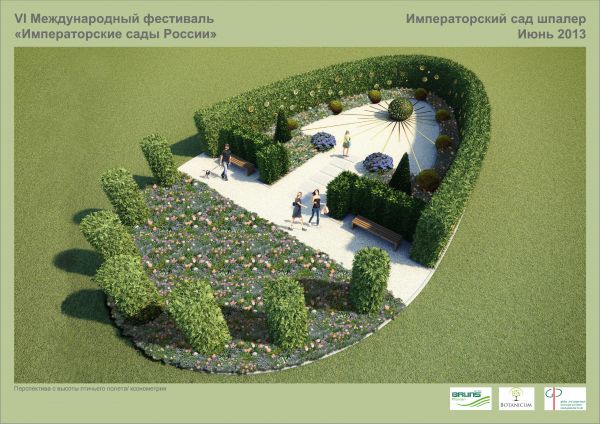|
|
Fabergé Egg Garden

Fabergé Egg Garden


Annotation
We chose the shape of the garden for our project for two reasons:
• The egg – the most beautiful and perfect shape every created by nature.
It’s the symbol of the future – the promise of the continuation of life, including in the cultural and religious sense.
• It was precisely this shape that the renowned Carl Fabergé selected for his series of jewelled “Easter Eggs,” which went on to enjoy tremendous popularity at the Russian Imperial Court.
The composition of the garden consists of two parts.
The distinct egg shape of the upper part of the garden is created by a thick, perfectly-trimmed Thuja hedge standing 2.5–3 meters tall, planted along the perimeter. The outside of the hedge is decorated with golden flakes 10-12 cm in size. Flakes are also used to decorate the inside, but there are more of them on this side and they are more generously sprinkled along the surface. What’s more, roses, grass and flowering perennial bushes have also been planted along the inside of the hedge.
The dominant element of this part of the garden is an orb of Japanese yew measuring 1.5 meters in diameter, adorned with golden ornamentation. Emanating from the orb are beams, rendered from gilded bricks or narrow kerbstone. Some of the beams thrust into spheres of trimmed Thuja or voluminous bushes of blossoming hydrangea. Complemented by the green-gold ornamentation of the hedge and the flowering plants, the entire composition creates the impression of a precious egg-shaped jewellery box, no less magnificent in terms of its beauty than the masterpieces created by the iconic Fabergé.
The lower part of the egg-garden is has been designed in the form of a large, blooming bed of roses, flowering shrubs and grass intended to remind visitors of the expansive Russian meadows and fields, while the shape is outlined using cylindrically-shaped Thuja bushes.
The two zones are separated from one another by a two-meter-wide path, along which benches have been installed, inviting visitors to take a rest and enjoy the view of the natural garden.

